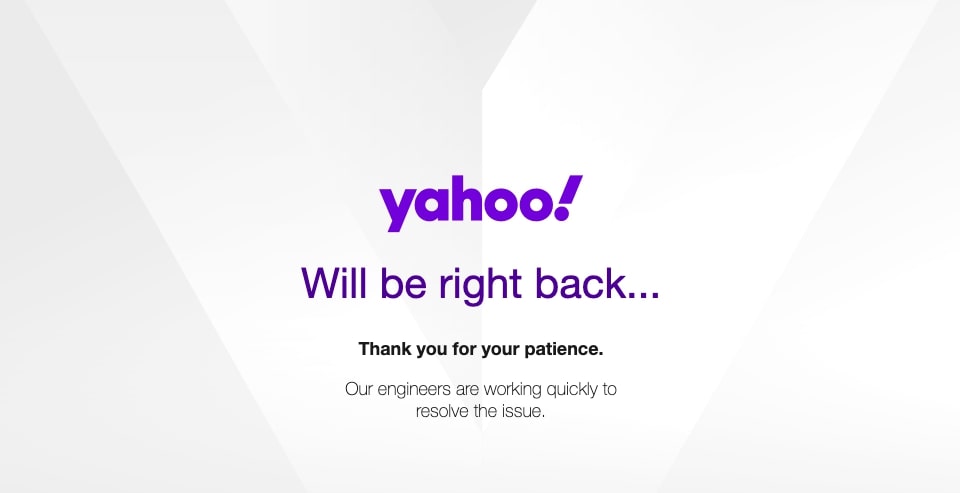How To Write Content That Rank On Google
How to write blogs that rank on Google? Are you looking for a perfect answer to this question? If yes, you are in the right place. All struggling bloggers and site owners keep looking for the best way to get a good rank on their content online but fail to achieve so. So, we knew it was time to break down all the myths and bring forth what exactly works to rank on the Google search engine. This comprehensive guide will provide you with an insightful view of all the things that best answer your query about how to write content that rank on Google.
So, without any further, let’s dive right into the core details!
10 Steps To Master The Art of Creating High-Quality Content That Ranks
Given below is the sure-shot formula to produce quality content that gets acknowledged by the Google helpful content algorithm and gets a higher rank on Google. So, follow each step precisely to get the best content piece ready in no time.
Research, Research, and Research More
The most important thing you can do to ensure your content ranks high in search engines is to research both the topic and the right keywords. Dig deeper into the topic to understand all the headings and sub-headings that it must contain. Use appropriate tools like Ahrefs or Semrush to locate all the top keywords and include them in your writing. A thorough topic research leads to a great content piece targeting your right keywords.
Write Well And Enough
Writing well pays off with higher Google rankings. Article length plays a key role here too because longer articles mostly have a higher rank than shorter ones. Have a look at some key points to write great content.
- Catchy Introductions: Writing a great introduction helps you grab the reader’s interest in reading further. So, always go for
- Content-Length: Nowadays, the ideal blog/article length of the top blogs is 1000 words or above. This is the general viewpoint gathered by analyzing different blog posts.
- CTA and Summary in Conclusions: All the key takeaways are discussed in the conclusions along with the Call-to-action (CTA) to keep the audience knowledgeable about the next steps to follow.
- Less Industry-specific Verbiage: Whatever niche you are writing in, make sure to use less industry-jargons and keep a friendly tone so that all types of audiences can easily understand it.
Make SEO Your Best Friend
Google loves SEO-friendly content but you should do it in the right manner. While the main process starts with selecting the right keywords based on their search volume and other aspects, putting them in the correct places also matters a lot. There are several top tools to help you identify the competitor’s keywords and rank them. But in any case, please refrain from keyword stuffing. It will never do good for your content and rather decrease your content readability and make your site less credible.
So, it is better to add some target keywords and similar semantic keywords for higher ranking. Believe me when I say that every great SEO-friendly content piece becomes a featured snippet.
Readability Matters
Readability enhances your content enrichment and makes it available for all types of readers out there. Conducting a proper content audit of your site will help you understand how you can improve your readability. Here are a few pointers to help you hack the readability quotient without any hassle.
- Provide value in your long content to help readers cut the slack and read key points directly.
- Create a proper content structure with clear headlines and sections, making readers skim through your content easily.
- Focus on mobile-first indexing because now more readers are reading on mobiles and if your site is not mobile-ready, your content will not help mobile users. Grab this opportunity to never miss any mobile reader.
- Content length matters but not breaking your chunks of paragraphs into shorter (4 sentences) paragraphs will make readers lose interest quickly.
- Using bold, numbered lists or bullets can help you add emphasis to your important stuff.
- Adding tables, charts, images, and infographics can help in explaining complex points graphically.
Self-Assess For E-E-A-T Guidelines
Google’s E-E-A-T guidelines are quite specific about writing people-focussed content. So, for that, you need to keep in mind what question should your content always answer and never deviate from it. Once you nail the Experience, Expertise, Authoritativeness, and Trustworthiness factors using the search quality raters guidelines, you will definitely make a good rank on the search engine.
The recent update on the Google helpful content algorithm also provides all the necessary information on shifting to creating people-focussed content and not search-focussed.
Unique Content Always Rules
Direct copy-pasting of content from different online sites will not do any good. Moreover, the explosive use of AI content will only do more bad than good. From lower SEO rankings to high reputational damage, these have a negative impact on SEO. So, always ensure that adding plagiarised or AI-generated content is a big NO-NO.
According to recent research, it was found that websites with more human-written content have a higher search ranking and about 75% higher edge than plagiarized or AI content. Thus, content uniqueness always pays in the long run.
Proper Linking To Credible Sources
Do you like providing facts and data to make your content rich? Well, you can up your content game by adding their respective sources to fine-tune it. It is quite necessary to link your facts to credible sources, this will increase your content’s overall credibility.
Be it internal or external linking, always make sure that all your posts have at least 2-3 internal blog links and a few authoritative site links. A well-researched article is known for its high-authority links to make it a credible source of information for the readers. It is the most prominent sign that showcases your genuine efforts in building content authority.
Optimize All Content Elements
Once you scrutinize the quality of your written content using keywords, it is time to focus on a few more touch-ups to make it rank-ready. Thus, you need to focus on treating the other elements such as metadata optimization. This includes the meta title, URLs, and meta description that need your attention to increase their search rank.
- Meta Title: This is the post title that pops up on the search engines to help readers interact with the post. You need to create an engaging title that makes the users click your link.
- Meta Description: You must write them under 155 characters with the target keyword. You must be direct and concise with the description to prompt your readers to open and read your post.
- URLs: A proper URL name can help your link get a better ranking on the search engine. Don’t change existing URLs when updating content. It will only lead to broken links and lost backlinks which no one wants.
Once you optimize these simple elements, the search engine crawls over the meta description to generate snippets to showcase your page to the searchers. This helps in effective ranking and distinguishes you from your SERP competitors. Remember a great snippet is key to convince users to click your post link which further increases your CTR (click-through rate).
Use Social Media For Content Promotion
Social media is the shortest way to connect your content to your intended customers directly. Thus, using social media for content marketability should be on your to-do list for better rankings. You need to create intriguing posts about your content or share parts of your blog/article to hook the users to click your post link. Also, make it a general practice of social bookmarking your posts.
Being an active member of your niche community can also help you interact with fellow bloggers which helps you create a viral buzz in no time. Mention the link of the article/blog on your social media profiles to allow your followers to read your content. Doing this consistently can do wonders for your online growth.
Update Content Timely
Don’t think content writing is a one-time thing. You need to update it regularly to provide your users with a constant dose of fresh and compelling posts that keep them engaged. Once the Penguin update was implemented, Google’s algorithm prioritized new posts creation that generated high site traffic.
Thus, following a proper content schedule to update all your existing blog content with fresh insights is crucial. With interesting content pumping into your site, your site will never go stale which will in turn keep the readers intrigued about new information.
Best Practices for Better Ranking on Google
While posting high-quality content should be your number #1 priority, there are many more factors affecting your post’s Google ranking. So, let’s learn more about how to write content that rank on Google and keeps the audience engaged. Some of these points are shared below:
- Site Speed
This is considered a top reason that influences your Google ranking immensely. Always ensure that your site loads fast and maintains a great uptime. The best free tool to measure your site speed and fix it is Google’s free Lighthouse Audit. This will allow you to rectify any identified speed issues and allows you to fix other site problems as well. In case, the problem lies with your shared hosting, either make an upgrade or transfer your site to a reliable shared hosting provider.
- Page Experience
All the web pages are weighed on certain web vitals. From checking the site security protocol with HTTPS to the mobile-friendliness and page loading speed, everything comes into consideration. Thus, it is essential to keep an eye on all the core web vitals to impart a better page experience to your readers. This is important to attract first-time site visitors to keep reverting to your site over and over again.
- Site UI/UX
Your site interface plays a vital role in a greater number of users visiting and revisiting it. It doesn’t mean you start beautifying your site. The simple thumb rule is to make it easier to navigate and user-friendly with all the elements working properly. The site pages should load in one or two clicks since no one likes to keep clicking to visit another site page.
- Picking a Micro Niche
High rankings on general niche sites are long gone owing to the simple reason that Google is saturated with them. So, what’s the solution? Well, you need to niche down and pick a micro niche and post content consistently on the same. It will make you an expert on the topic and help you gain authority in no time. Slowly, when you start getting more views, your domain authority will increase tremendously. This will convert you into a brand name and help you emerge as an industry leader.
- Keep Users Engaged and Hooked To Your Site
User experience doesn’t just end at fancy UI/UX. Keeping an idea of providing value to your users regularly can go a long way too. We all know how Google Helpful Content update affected most blogs in the worst way. Thus, it is crucial to offer more than just outstanding content.
Well, your offerings can be anything from adding a new course or tool to presenting client testimonials and white papers. You need to brainstorm all the ideas and keep implementing them to know what your audience likes and how you can keep them hanging around your blog/website. Providing value bombs to your users can help your site gain more traction.
The Final Verdict
There are a plethora of factors that define the real-time site rankings. Since Google has always preferred high-content quality for a better rank on the search engine, you need to ensure that your content is top-notch. We hope you got your answer to the question: how to write article that rank on Google.
So, it is time to follow all the above guidelines to get a good Google ranking that helps positively impact your credibility and profitability.










